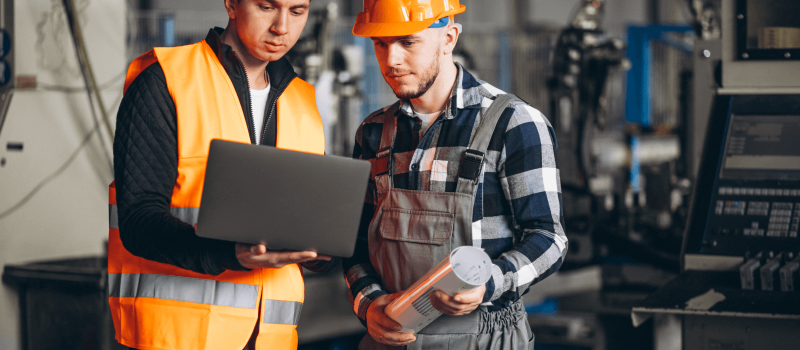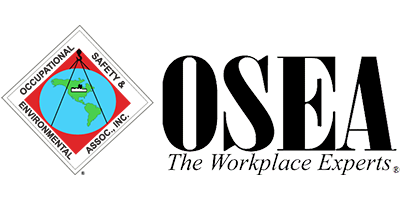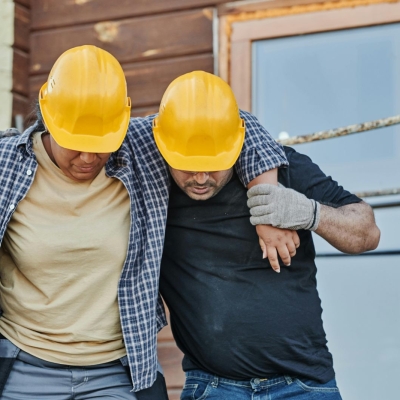Why NFTA-Metro Roadway Worker Training Matters
Sunday, June 15, 2025 OSEA, Inc.

Why NFTA-Metro Roadway Worker Training Is Essential for Transit Employees
Transit workers don’t just face typical job-site risks. They work in active traffic zones, around live tracks, near moving trains and buses, and often under time pressure. In that kind of setting, there’s no room for error and no time to learn safety on the fly.
That’s why NFTA-Metro Roadway Worker Training isn’t just another checkbox for transit employees. It’s a critical part of ensuring workers stay safe, aware, and fully prepared for the job's hazards.

At OSEA, we’ve helped train countless public transportation teams—both in the classroom and the field. And we’ve seen firsthand how proper roadway worker training makes a real difference in safety, compliance, and peace of mind. In this article, we’ll break down why this training is so necessary, what it covers, and how it helps keep workers and passengers safe across high-traffic transit systems.
What Is Roadway Worker Training?
Let’s start with the basics. Roadway Worker Training refers to a specialized set of safety training programs designed for employees who work on or near transit system roadways, tracks, or active work zones. For agencies like NFTA-Metro—the Niagara Frontier Transportation Authority—this training is required for anyone working in areas where buses, trains, or trolleys operate. That includes not only operators but also maintenance crews, construction teams, flaggers, and support staff who may be near the right-of-way. This training covers a wide range of topics, including traffic awareness, safe work zone procedures, communication protocols, emergency response, and more. It’s all about making sure workers know how to operate safely in environments where vehicles are constantly in motion.
Why It Matters: The Risks of Transit Work Environments
Working on a transit system isn’t like working in a warehouse or office. It’s a live, dynamic environment, and even a minor mistake can lead to a significant incident. Here are just a few of the risks transit workers face every day:- Moving vehicles and trains – Buses and trains don’t stop on a dime. Workers must remain alert and adhere to strict safety zones to prevent being struck.
- Low visibility – Workers may be operating early in the morning, at night, or in adverse weather conditions, when visibility is limited, and drivers may not be able to see them.
- Electrified tracks and equipment – In rail systems, the presence of live power adds a layer of danger. One misstep near a power rail can be fatal.
- Crowded public areas – Workers may be operating around passengers, pedestrians, or cyclists, which adds distractions and makes the job even more unpredictable.
- Tight deadlines and high pressure – Transit schedules are strict. Teams often work under time pressure to complete repairs or inspections quickly, which can increase the likelihood of rushing or missing a safety step.
In short, the job is fast-paced and highly variable. That’s why roadway worker training is so necessary: it provides employees with the knowledge, awareness, and habits they need to stay safe, even when things are moving quickly around them.
What NFTA-Metro Roadway Worker Training Covers
This training isn’t just about telling workers to “be careful.” It’s a structured, in-depth program that prepares transit workers for real-world situations. Here’s what’s typically included:1. Right-of-Way Safety
Workers learn how to recognize danger zones, follow safety signage, and respect the limits of active roadways and tracks. This includes clearance distances and speed awareness.2. Communication Protocols
Whether it’s using radios, signals, or verbal commands, clear communication is critical in noisy or fast-moving settings. The training outlines how to coordinate with other workers, operators, and supervisors.3. Equipment Awareness
Knowing where equipment is located and how it behaves is key. The training teaches workers how to safely navigate around buses, light rail systems, and maintenance vehicles.4. Emergency Preparedness
From fire response to electrical issues, workers learn what to do in the event of an emergency. Fast, correct responses reduce injuries and damage.5. PPE and Work Zone Setup
Workers are trained on the proper use of personal protective equipment (PPE), including traffic cones, barriers, and signage, as well as how to set up a safe workspace, even in narrow or complex environments.6. Regulatory Compliance
The program ensures workers meet federal and local safety requirements. This includes OSHA standards, DOT guidance, and NFTA’s own safety rules. By the end of training, employees are expected to know the dangers they face—and how to handle them without hesitation.
Benefits of Roadway Worker Training for Transit Agencies
Now let’s talk about the real-world benefits that come with this type of safety training:1. Fewer Incidents and Near-Misses
When workers know where to stand, how to communicate, and what to look out for, accidents decrease. The fewer incidents you have, the less time is spent on investigations, claims, or downtime.2. Stronger Compliance Record
Failing to meet roadway safety standards can result in fines, citations, and even more severe consequences. A strong training record demonstrates to inspectors and stakeholders that your agency prioritizes safety.3. Higher Worker Confidence
When employees are trained well, they feel safer, and that confidence makes them more focused and efficient. It also reduces stress, especially for newer workers who may feel unsure in high-risk areas.4. Better Public Perception
When passengers and the public see your team following safety protocols and working professionally, it builds trust in your transit system. It demonstrates that you prioritize both employee safety and public well-being.5. Reduced Liability
Fewer injuries and better compliance mean less legal risk. It’s that simple.
Who Needs Roadway Worker Training?
This training is required for anyone working on or near transit roadways or tracks. That often includes:- Maintenance technicians
- Track and infrastructure crews
- Safety supervisors
- Inspectors and engineers
- Construction contractors
- Signal and electrical teams
- Cleaning and sanitation crews
- Bus depot staff
If your team is working in or near moving transit vehicles—or even walking across tracks during their shift—this training should be on your radar.
Why Choose OSEA for Your Roadway Worker Training?
We know transit safety. Our trainers have decades of real-world experience, and we’ve worked with public agencies and transit systems across the U.S. When you partner with OSEA, you get:- Custom training programs based on your specific jobsite and equipment
- Instructors who understand OSHA, DOT, and transit-specific standards
- On-site and virtual options to fit your schedule
- Clear documentation and reporting for compliance records
- Hands-on drills that simulate real transit work environments
We don’t do “check-the-box” training. We train for the real world because your workers deserve absolute safety.
Don’t Wait Until Something Goes Wrong
NFTA-Metro Roadway Worker Training isn’t just important—it’s necessary. It prepares your team for the unique challenges of transit work and helps create a safer system for everyone. If you’re managing a transit team, maintenance crew, or contractor group that works near roadways or tracks, don’t leave safety up to chance. Give your workers the tools they need to stay sharp, stay safe, and stay ready. Want to learn more? Contact OSEA today to schedule a training consultation or ask about custom roadway safety programs. We’re ready to help you build a stronger, safer workforce.




